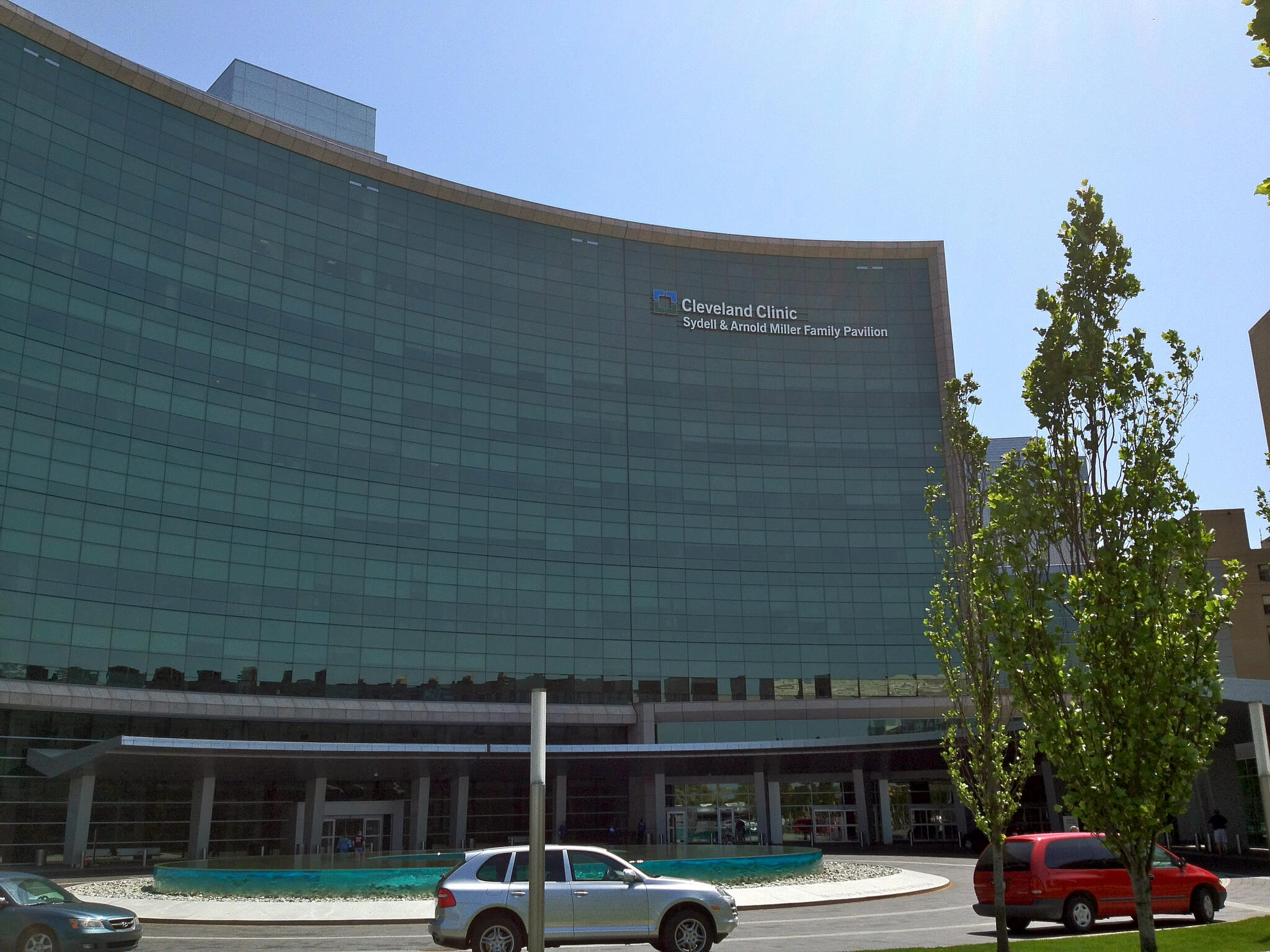Last update 01 Nov 2024

Intermountain Hospital
Last update 01 Nov 2024
Overview
Related
100 Clinical Results associated with Intermountain Hospital
Login to view more data
0 Patents (Medical) associated with Intermountain Hospital
Login to view more data
3
Literatures (Medical) associated with Intermountain Hospital01 Jun 2024·Gynecologic Oncology Reports
Durable response to BRAF inhibitor monotherapy in recurrent metastatic low grade serous ovarian cancer
Review
Author: Lomo, Lesley ; Sibbald, Kiera ; Sama, Shashank ; Werner, Theresa L ; Straubhar, Alli ; Rosqvist, Sterling ; Savage, Talicia
04 Mar 2022·Baylor University Medical Center Proceedings
Multiple secondary neoplasms in nevus sebaceus excision
Author: McCaughey, Cort D. ; Maldonado, Dylan ; Dowdle, Travis S. ; Mehegran, David A.
01 Sep 2004·Journal of Applied Gerontology
What Quality Paid Home Care Means to Family Caregivers
Author: Dunkley, Gregory J. ; Piercy, Kathleen W.
35
News (Medical) associated with Intermountain Hospital23 May 2023
Major volume increases, managed care contract rate increases and outpatient pharmacy revenues fueled a 15.7% year-over-year revenue increase that outpaced Cleveland Clinic's 10.9% rise in total operating expenses.
Cleveland Clinic is starting 2023 on the right side of zero, reporting Tuesday a first-quarter operating income of $32.3 million (0.9% operating margin) and a net income of $335.5 million.
Though the nonprofit system had reported a $1.2 billion net loss across 2022, the first quarter’s numbers continue the upward momentum Cleveland Clinic enjoyed at the end of last year.
Like many health systems have reported in recent weeks, the performance is also a substantial bounce back from the first quarter of 2022 when the omicron wave dragged Cleveland Clinic to a $104.5 million operating loss (-3.4% operating margin) and a $282.5 million net loss.
On a year-over-year basis, total unrestricted revenues grew 15.7% by way of a 13.3% rise in net patient revenue, to $3.1 billion, and a 37.3% increase in other restricted revenues, to $425.3 million.
For net patient revenue, a combination of strong demand and 2022’s elective postponements helped Cleveland Clinic realize double-digit percentage volume increases; admissions rose 12%, total surgical cases increased 15.9% and outpatient evaluation and management visits jumped 15.9% year over year, the system reported. The system also said it benefited from rate increases on its managed care contracts and, for other unrestricted revenues, increases in outpatient pharmacy revenues tied to greater utilization.
Total operating expenses, meanwhile, increased 10.9% year over year “primarily due to higher patient volumes and inflationary trends that increased salaries, wages and benefits [10.3% increase], supplies expenses [11% increase] and pharmaceutical costs [24.2% increase],” Cleveland Clinic wrote.
The other key difference from the first quarter of 2022 was the system’s investment performance. Cleveland Clinic saw a $314.2 million return in the most recent period versus a $212.5 million investment loss the prior year.
The 20-hospital system reported 321 days of cash on hand and current and long-term debts totaling $5 billion as of March 31.
In January, CEO and President Tom Mihaljevic, M.D., said the nonprofit was prioritizing hiring efforts to offset labor shortages and would be keeping an eye out for opportunities to reduce expenses. This included a pause on “some” administrative hiring, he said.
Cleveland Clinic narrowly joins the ranks of Sutter Health, Kaiser Permanente, Intermountain Health and Mayo Clinic as nonprofits reporting an operating gain in 2023’s opening frame. Providence and CommonSpirit Health have landed on the other side of the spectrum with hundreds of millions in reported operating losses.

Financial Statement
23 May 2023
Providence and its leadership highlighted rising demand, ongoing restructuring plans, expense-reduction programs and investment market gains as signs for optimism despite "external pressures … expected to persist into 2023."
Renton, Washington-based Providence lessened its financial losses during the first quarter but is still staring down the barrel of a tough year for its balance sheet.
For the three months ended March 31, the 51-hospital nonprofit system reported an operating loss of $345 million (-5.1% operating margin) as opposed to the prior year’s $510 million loss (-8.1% operating margin). It attributed the favorable shift to a rise in patient volumes and revenues that was somewhat offset by costly length-of-stay increases.
Providence’s bottom line was softened by $259 million in investment gains, which, along with other nonoperating items, landed the organization’s net loss at $117 million.
This was a substantial turnaround from the first quarter of 2022’s more than $4.2 billion net loss, though the majority of that total was fueled by $3.4 billion lost due to the disaffiliation of Orange County, California-based Hoag Memorial Hospital Presbyterian.
Providence is still finding its footing after 2022’s $1.7 billion operating loss (-8.8% operating margin) and $6.1 billion net loss. The system worked to limit the damage with a midyear organizational restructuring as well as other expense-reduction initiatives. Health system leadership said those efforts contributed to the first quarter’s year-over-year margin improvements.
“Although external pressures are expected to persist into 2023, we are optimistic about the road ahead,” Chief Financial Officer Greg Hoffman said in a release. “Staying the course on our strategies for recovery and renewal is key to navigating the times and positioning us to continue improving the health of our communities well into the future.”
Total operating revenues across Providence rose 8.2% year over year due to a rise in volumes, particularly in the outpatient setting. Compared to the prior year’s first quarter, inpatient admissions were up 4%, acute adjusted admissions were up 6%, case mix adjusted admissions were up 7% and non-acute volumes rose by 7%, the system said.
Total operating expenses rose 5% year over year, “driven mainly by costs associated with serving higher patient volumes and continued elevated length of stay,” the system wrote. Salaries and benefits expenses were up 5% despite the system using less premium labor compared to the height of the omicron surge. Supply expenses rose 15% year over year.
Providence also highlighted discharge roadblocks as a contributor to higher-than-necessary spending during the quarter. Limited local supply of post-acute care capacity forced the system to keep patients longer than needed during the first quarter, it said, though Providence is addressing this through a "variety of community partnerships, patient progression and capacity improvement programs.”
The system’s financial report also outlined recovery programs focused on addressing “pent-up demand” for surgical care, reduced workforce expenses, streamlined payments from insurers and managing discretionary spending.
Providence’s unrestricted cash and investments dipped slightly from $9.5 billion on Dec. 31 to $9.4 billion on March 31. As of that time, it had 126 days of cash on hand.
The system also highlighted $563 million in provided community benefit, a $151 million year-over-year increase, “despite the challenges” hitting its operations during the quarter.
“Last year, we provided nearly $2.1 billion in uncompensated care and other community benefit activities, which is our largest investment in community benefit to date and represents an increase of $600 million since the pandemic began,” President and CEO Rod Hochman, M.D., said in a release. “Thank you to everyone at Providence for making this possible. Together, we will continue meeting the health care needs of our communities, no matter how challenging the environment gets, and will ensure the Mission of Providence thrives for years to come.”
Providence’s operating losses aren’t quite so bad as fellow Catholic nonprofit CommonSpirit Health, which recently posted a -8% operating margin for the most recent quarter. However, other nonprofits including Sutter Health, Kaiser Permanente, Intermountain Health and Mayo Clinic have reported coming out positive on the backs of rising demand for care.

Financial Statement
22 May 2023
Intermountain Healthcare reported rising volumes and hundreds of millions in investment gains that outpaced the opening months of 2022.
Intermountain Health pulled in $104 million in net operating income (2.6% operating margin) and a $549 million excess of revenues over expenses during the first quarter of 2023, according to recent financial statements from the Rocky Mountain nonprofit.
The 33-hospital system reported a 41.3% year-over-year increase in revenues to nearly $4 billion for the three months ended March 31, though much of the increase can be attributed to last April’s merger with the eight-hospital SCL Health.
Similarly, the system saw a 43.9% year-over-year rise in its operating expenses to $3.7 billion with employee compensation and benefits alone jumping by 51.9%.
Compared to the prior year’s opening quarter (and after interest, depreciation and amortization), Intermountain’s net operating income fell by $26 million.
However, $481 million from investment income during the quarter went a long way to boost its net income to $549 million, particularly compared to the prior year’s $428 million investment loss and resulting $298 million net deficit of revenues over expenses.
Volume numbers accompanying the financials outline an uptick in demand similar to those reported by other systems during the first quarter. When comparing year-over-year data on a pro forma basis that includes pre-merger Intermountain and SCL, inpatient admissions rose 4.3%, adjusted admissions rose 8.2%, emergency room visits rose 3.8% and outpatient visits rose a staggering 30.4% (including joint venture activity).
The system also increased its workforce by 2,570 full-time equivalents compared to legacy head counts, which, alongside industrywide wage increases and economywide inflation, contributed to higher employee compensation and benefits spending at the system.
Intermountain recently closed its year of merger-fueled growth with $121 million in net operating income and a $3.1 billion excess in revenues, though that bottom line was bolstered by almost $4.1 billion in affiliation contributions from the SCL deal. Without those funds on the books, Intermountain’s $1.6 billion in investment losses would have landed the system squarely in the red.
Pitting Intermountain’s latest numbers against those of its large nonprofit peers place the system’s operating performance above Kaiser Permanente’s 0.3% operating margin and Sutter Health’s 2.3% operating margin but still somewhat below Mayo Clinic’s rock-solid 3.5% operating margin. Each of the organizations were well ahead of Catholic giant CommonSpirit Health, which posted a blistering -8% operating margin for the most recent quarter.

Financial StatementAHA
100 Deals associated with Intermountain Hospital
Login to view more data
100 Translational Medicine associated with Intermountain Hospital
Login to view more data
Corporation Tree
Boost your research with our corporation tree data.
login
or

Pipeline
Pipeline Snapshot as of 10 Nov 2024
No data posted
Login to keep update
Deal
Boost your decision using our deal data.
login
or

Translational Medicine
Boost your research with our translational medicine data.
login
or

Profit
Explore the financial positions of over 360K organizations with Synapse.
login
or

Grant & Funding(NIH)
Access more than 2 million grant and funding information to elevate your research journey.
login
or

Investment
Gain insights on the latest company investments from start-ups to established corporations.
login
or

Financing
Unearth financing trends to validate and advance investment opportunities.
login
or

Chat with Hiro
Get started for free today!
Accelerate Strategic R&D decision making with Synapse, PatSnap’s AI-powered Connected Innovation Intelligence Platform Built for Life Sciences Professionals.
Start your data trial now!
Synapse data is also accessible to external entities via APIs or data packages. Empower better decisions with the latest in pharmaceutical intelligence.
Bio
Bio Sequences Search & Analysis
Sign up for free
Chemical
Chemical Structures Search & Analysis
Sign up for free